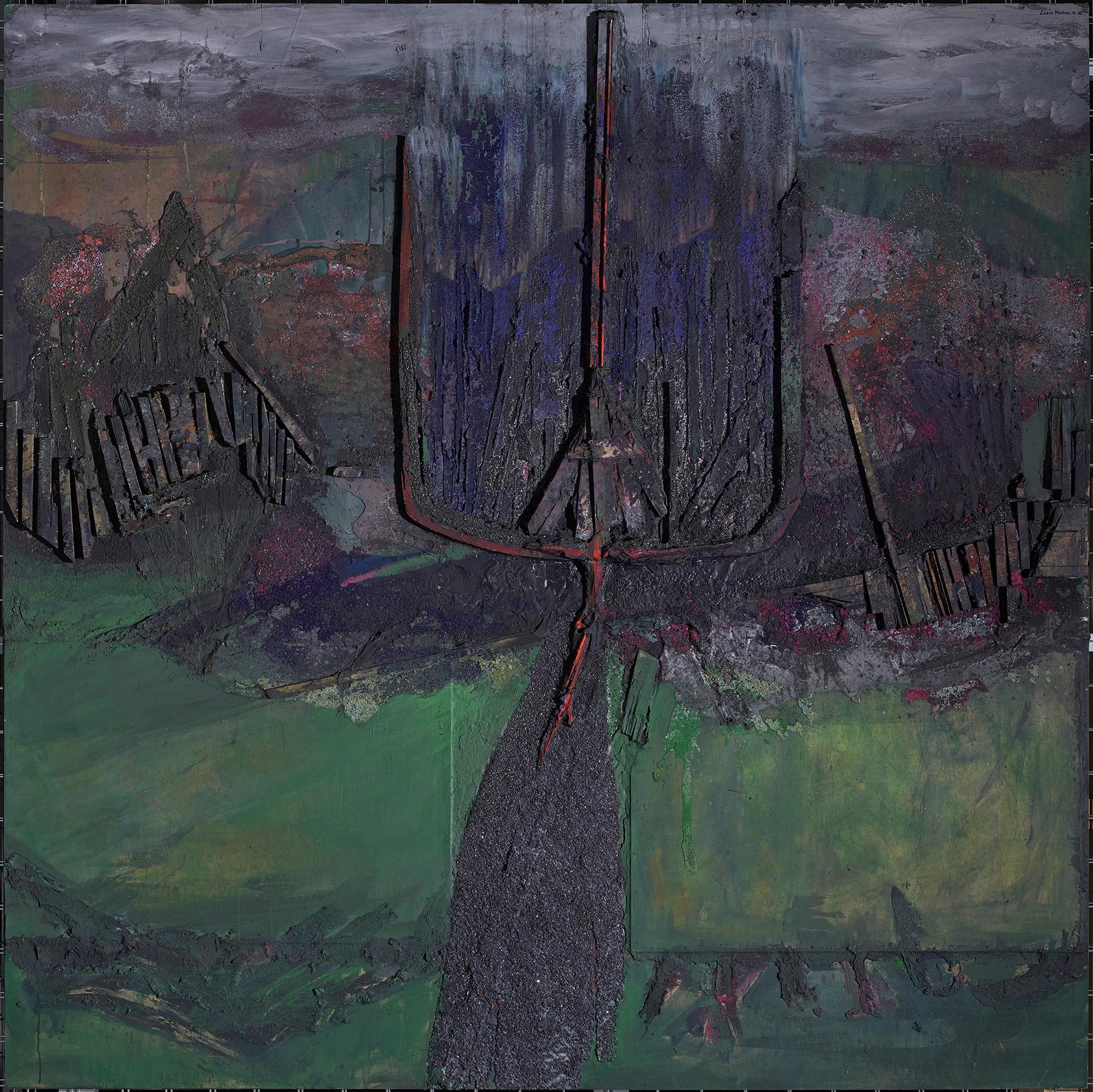
Lucio Muñoz (Madrid, 1929-1998)
Fisial de Mo
1988
WORK INFORMATION
Mixed media on panel, 245 × 245 cm
OTHER INFORMATION
Inscription on the reverse: "Lucio Muñoz 1988 / 245 × 245 / Fisial de Mo"
Lucio Muñoz was one of the greatest representatives of Spanish abstraction in the 20th century. After his studies at the San Fernando School of Fine Arts in Madrid, two events had a significant impact on his career: his stay in Paris in 1955–1956, where he encountered the Art Informel movement spearheaded by painters like Dubuffet, Fautrier and Wols; and his discovery in 1958 of wood, not merely as a support but as the star actor of his painting. From then on, this material—treated differently in each phase—would become the vehicle of an oeuvre firmly rooted in Spanish art traditions yet simultaneously open to the international scene, a body of work rich in poetic connotations and keenly attuned to nature's expressivity.
The works by Muñoz in the Banco Santander Collection offer a fairly comprehensive overview of the Madrid-born painter's creative career. After his "informalist" early years and pivotal discovery of wood in the late 1950s, he consolidated a dark, tragic pictorial style in the 1960s that gradually became more colourful and acquired much more defined curved and geometric figures as the decade wore on. This phase is represented by Verano [Summer], a work from his Encendida [Lit Up] series, where forms made of painted, carved, sanded and cut wood create a composition closer to landscape and with greater depth than his previous "informalist" walls. This piece heralds a tendency that would become practically the norm in his painting during the 1970s: presenting seemingly organic forms in landscape-like settings with a slightly supernatural feel. Metis Acre [Bitter Metis] follows this pattern to the letter: the central figure, which could be animal, vegetable or mineral, rises from a rugged terrain, enveloped in a simple yet mysterious atmosphere. This separation between the ground and the "sky" where the figures are located is also quite typical of his paintings from the 1970s and early 1980s.
In Frío Talus [Cold Talus] we again find the recreation of part-dreamlike, part-supernatural characters and settings, but now, as in the rest of his works from these years, the forms are diluted, the relief of the wood is less pronounced and the day seems to have gained ground on the night. The artist explained that in this period he had drawn closer to "the poetics of mystery in broad daylight, without tricks or at least with subtler tricks".
Fisial de Mo is one of Muñoz's masterpieces, a genuine spectacle of colour and textures in which nature has taken over the picture like a whirlwind. After experiencing a crisis of language in the mid-1980s and briefly abandoning wood (in favour of paper) as an expressive medium, Muñoz returned to painting and entered one of the most prolific and creative stages in his career. Somewhere along the way he had overcome certain technical tics, and this allowed him to paint more freely and spontaneously, although he never relinquished his great identifying hallmarks: wood, nature and mystery.
The 1990s witnessed the culmination of the long journey towards light, nakedness and simplicity that was his life's work. At the height of his creative maturity and widespread recognition, the artist offered us serene, noble, almost denuded panels. In them the wood has come into the light and, in an act of extreme divestiture, unhesitatingly claims its right to be the protagonist of the picture. As Muñoz once said, after so many years "my wood has ended up becoming paint". The final work in this select survey of the artist's different phases, Kial, is a splendid example of this. [Rodrigo Muñoz Avia]

